PLOT 1 BY 2
FAMILY TABLE
VIDEO CAM SCAM
TATLUBAAZ
-
Te3N
- U/A 13+
- Mystery
- Drama
Eight years since the death of his granddaughter John Biswas hasnt moved on like the rest of the world Angela was found dead after an unsolved kidnapping John in hope of finding her kidnapper diligently pursues the truth and orchestrates his own investigation after official channels fail Father Martin Das an excop who failed to locate the kidnapper is weighed down by guilt and finds solace in sermons and dogma He occasionally guides John in hopes of repenting for his past A young boy named Rony is abducted from the same place as Angela and her closed case returns to limelight when Sarita Singh deduces that the manner of both the kidnappings is concordant Spurred by the fresh developments John and Martin regain renewed fervour and dig further into the mystery John pieces together all the bits of information available in hopes of finding the true identity of this child kidnapper and if possible some long awaited closure and peace But as John Martin and Sarita find out theres more beneath the surface
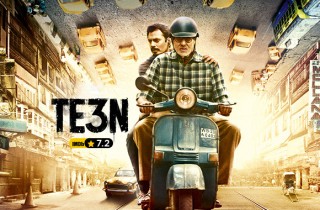
-
Welcome
- U/A 13+
- Comedy
- Drama
Uday and Majnu want to get their beautiful sister Sanjana to get married Nobody is ready to marry her as no one wants to be associated with a family of dons On the other hand Dr Ghungroo is on a hunt for a bride belonging to a decent family for his nephew Rajiv Rajiv jumps on a burning building to save Sanjana and is smitten by her Uday and Majnu want their sister to get married to Rajiv Dr Ghungroo also agrees to it thinking Uday is a decent man only to later realise that he is a don Dr Ghungroo quickly flees to South Africa with his family where Sanjana and Rajiv meet once again and fall in love After much drama Dr Ghungroo agrees to get them married but on an impossible condition

-
Hunterrr
- U/A 16+
- Comedy
- Romance
Mandar Ponkshe Gulshan Devaiah is an ordinary guy with a singleminded pursuit of girls Hes unconventionally funny without meaning to be witty His friends have lost all hope of him settling down but then he meets Tripti Radhika Apte and falls in love The struggle begins when he attempts to hide his notorious past from her What will happen when Tripti finds out This is a story about a guy who doesnt want to grow up

-
Khakee
- U/A 13+
- Action
- Crime
Inspector Anant Kumar Amitabh Bachchan a dedicated police officer has to leave his daughter’s wedding when he’s entrusted with the responsibility of bringing a wanted terrorist Iqbal Ansari Atul Kulkarni safely from Chandangarh to Mumbai He takes four officers with him The journey isnt so easy however as the terrorists start attacking and hampering the mission One of the inspectors broach the idea of letting Iqbal go but is refuted by DCP Anant A frustrated and tired Iqbal finally breaks his silence and reveals the true intentions of their attackers Will this revelation help or hamper the mission
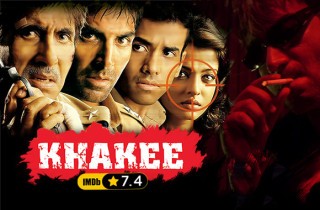
-
Jab We Met
- U
- Comedy
- Romance
A wealthy but suicidal industrialist Aditya Shahid Kapoor boards a train without a ticket to escape his depressing life On the journey he bumps into Geet Kareena Kapoor a Punjabi chatterbox bubbling with energy and optimism She is determined to get him to open up What follows is a series of misadventures centered around a girl who just cant seem to stay out of trouble and a man who feels obliged to look out for her

-
Jaan-E-Mann
- U
- Music
- Romance
To avoid paying a hefty alimony Suhaan Salman Khan thinks of getting his exwife Pia Preity Zinta remarried For that he convinces Pia’s simpleton college friend Agastya Rao Akshay Kumar that he can still marry his college crush He then helps Agastya to woo Pia but ends up falling in love with her all over again
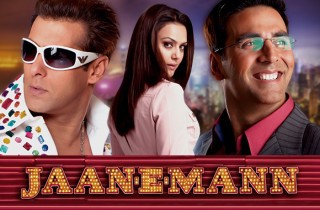
-
Khatta Meetha
- U
- Comedy
- Crime
When the Municipal Corporation puts a hold on Sachin Tichkules payment a berk but ambitious municipal contractor he decides to sue them But matters worsen when the new municipal commissioner turns out to be his former girlfriend
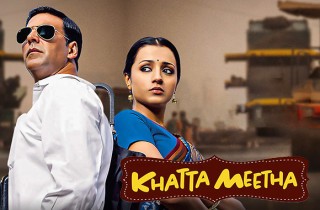
-

-
Piku
- U
- Drama
Piku Deepika Padukone is a Delhi based architect who manages her small businessruns her home and takes care of her 70year old father Bhashkor Banerji Amitabh BachchanA hypochondriac Piku’s Baba must ensure that he has her attention 247 leaving her with little time to do anything else Romance and getting a life of her own just don’t seem possible While both are deeply attached with one another they are equally strong headed stubborn and just won’t let go when dealing with each other’s idiosyncrasies and quirks When Bhashokar emotionally blackmails Piku to take a road trip from Delhi to Kolkata the owner of the local cab company Rana Irrfan Khan has no choice but to drive them personally since none of his drivers are willing to endure Piku or her eccentric father During this undesired road trip they learn to deal with each other’s moods and idiosyncrasies and it reveals more than Bhashokar’s bathroom habits What follows is a heady mix of motion emotion commotion which culminates as Piku and Bhaskhor return to their roots in Kolkata giving us an insight into the father daughter relationship where Bhaskor’s irritating yet endearing demeanor and Piku’s equally headstrong nature may always be at loggerheads but this seemingly crazy relationship is bonded by an understated and an unconditional love that leaves you wanting more

-

-
Masti
- U/A 16+
- Comedy
- Mystery
Fed up of their regular lives and wives three friends Meet Prem and Amar get together and make plans to reintroduce fun and excitement into their lives They set their sights on other women but eventually realise that they have all been seeing the same girl Monica She blackmails the trio threatening to expose their affairs to their wives unless they give her Rs 10 lakhs Having gathered the money the terrified men arrive at the location only to find Monica dead in her car What follows is a comical and nightmarish adventure of the three as they try to survive the mess they’re caught up in

-
Gangs of Wasseypur – 2
- A
- Action
- Crime
It is the second instalment of the Gangs of Wasseypur series centered around the Coal mafia of Dhanbad Jharkhand and the underlying power struggles politics and vengeance between three crime families
- Top
- 10

-
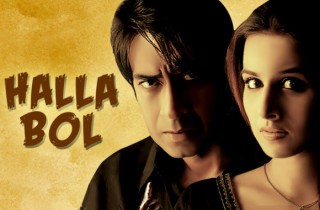
TAAZA TADKA
-
Plot 1 By 2
- U/A 13+
- Comedy
- Drama
A lighthearted story of 5 young quirky but bickering cousins of old Delhis Srivastava family whose world turns upside down when a government notice dubs their house as illegal and gives them 30 days to vacate The crazy dysfunctional family must come together to save the family
- Top
- 10
 New
New -
Mata Ki Mahima
- U
- Devotional
Indrayanis powerdriven marriage to Vijender Rawat leads to ruthless acts targeting threats like Asha and Suman Mahimas birth guided by Maa Sherawaali becomes a beacon of hope challenging Indrayanis tyranny with compassion and righteousness
 New
New -
India Post
- U
- History
This series will trace the evolution of India Post through the milestones in India’s complex history and how the post office has not only been a witness to but also a catalyst for India’s transformation in its political social economic and physical development
 New
New -
Crime Files
- U/A 16+
- Crime
- Drama
The show Crime Files narrates human stories in which lives relationships hope and trust are destroyed as crime infiltrates the simple and ordinary aspects of life The narrative will revolve around relatable and earthy characters who represent us and the world around us The show aims to raise awareness about crime prevention while keeping viewers engaged and on edge The host Ravi Kishan is a profound actor who will spread awareness about crime and requests the audience to be vigilant and alert
- Top
- 10

-
- Top
- 10
 New
New -
Gangs of Wasseypur – 2
- A
- Action
- Crime
It is the second instalment of the Gangs of Wasseypur series centered around the Coal mafia of Dhanbad Jharkhand and the underlying power struggles politics and vengeance between three crime families
- Top
- 10
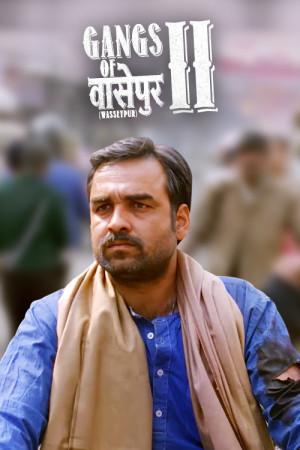
-

-
Dahej Dasi
- U
- Drama
This story is about a girl named Chunari trapped at an ageold social practice and ends up becoming a Dahej Dasi of a rich Rajawat Family Everything seemed normal until Chunari became an orphan and her life took an unwanted and unexpected sad turn The story highlights her sacrifices her bravery and most importantly her courage to stand up against the ageold social practice of Dahej Dasi
 New
New -
Family Table
- U
- Food
A family food game show wherein 2 families compete against each other by preparing their legacy dish This is followed by celebrity guests presenting their own legacy dish and challenging both the families to recreate the dish The family which makes the best version wins an opportunity to dine with the celebrity guest and celebrity chef Ranveer Brar
- Top
- 10
 New
New -
Dhartiputra Nandini
- U
- Drama
When a Farmer’s daughter ascends to the throne of palaces a timeless tale of triumph and transformation unfolds Witness a Love Saga Of Nandini from humble fields to majestic realms as she embraces her destiny with courage and grace
- Top
- 10

-
Ek Ka Dum 1 - Dubbed In Hindi
- U/A 13+
- Action
- Thriller
A rock star who suffers from a mental disorder due to his bitter past is convinced that his parents were murdered by three men Taking the support of a journalist he sets out to find the evil men

-
Jaan-E-Mann
- U
- Music
- Romance
To avoid paying a hefty alimony Suhaan Salman Khan thinks of getting his exwife Pia Preity Zinta remarried For that he convinces Pia’s simpleton college friend Agastya Rao Akshay Kumar that he can still marry his college crush He then helps Agastya to woo Pia but ends up falling in love with her all over again

-
Video Cam Scam
- U/A 16+
- Crime
- Thriller
A story of Sub inspector Vinay Kumar who unknowingly falls into the trap of Video calling app by Sonu Titu Sweety and ends up in a situation thats full of thrilldrama and expose
- Top
- 10
 New
New -
Filamchi Music Awards
- U
- ENTERTAINMENT
- Drama
In an industryfirst Filamchi Bhojpuri launched Filamchi Music Awards that recognizes and honors the outstanding contributions of artists and musicians in the Bhojpuri music fraternity Filamchi Music Awards captivated audiences with its unique blend of folk playback singers and contemporary celebrities providing a memorable experience for all
 New
New -
The Fall Of Dhaka
- U/A 13+
- History
The 1971 war with Pakistan was a quasi total war fought on both the eastern and western fronts across many battle theatres that led to decisive results It broke Pakistan in two and helped the new state of Bangladesh to emerge on the global stage It entailed a march on the capital of Dacca Dhaka enforced regime change and the mass surrender of approximately 93000 prisoners of war The Indian political leadership displayed a singleminded and coldblooded pursuit of national interests The leadership of all three Service chiefs was inspiring and highly professional This film puts spotlight on the charismatic leaders who won the war for us and records the bravery sacrifice of our brave young officers and jawans
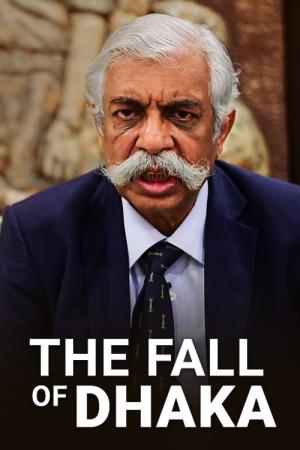
-
Laal Banarasi
- U
- Drama
The story highlights the exploitation happening with the ‘Bunkars’ in Banaras whose craft is appreciated all around the world but they are paid peanuts by the traders Amidst this blooms a love story between the two opposites Gauri a bunkar and Garv a trader The story is of Gauri who belongs to the bunkar community facing series of incidents which destroys her family and swears to bring about a change in their life and stop the exploitation by directly trading the sarees This becomes a battle with traders creating hurdles in her life but she is unstoppable
- Top
- 10

-
Beti Hamari Anmol
- U
- Drama
The narrative centers around Anmol a young woman hailing from a small town She navigates the challenges posed by societal norms which often hinder the progress of girls from such backgrounds in areas like education career selection and marriage Adding to her plight is the burden of social bias due to her short stature earning her the label of a Dwarf Compelled to wed in unfavorable circumstances Anmols unyielding determination and selfconfidence empower her to confront the animosity emanating from her inlaws and the wider society Undeterred by the barriers she triumphs over adversity and attains the esteemed position of a doctor in the very hospital where her father serves as a custodian This remarkable journey not only restores her honor in the society but also instills a sense of pride in her own family Anmols saga resonates deeply portraying how ones resolute spirit can surmount any obstruction in life
 New
New -
Do Chutki Sindoor
- U
- Drama
The show is about two sister Siddhi Maya and their bonding where Sidhhi is ready to go to any length for the happiness of her sister Maya who is mentally a 12 years old kid and how eventually they become Sautan and Maya turns out to be the main villein in Siddhis life
- Top
- 10

LIVE CHANNEL
-
Mujhse Shaadi Karogi
- U/A 13+
- Comedy
- Romance
Two male roommates compete for the affection of a woman with an eccentric father who disapproves of any man dating his daughter Additionally she wants to focus more on her nascent designing career than on romance
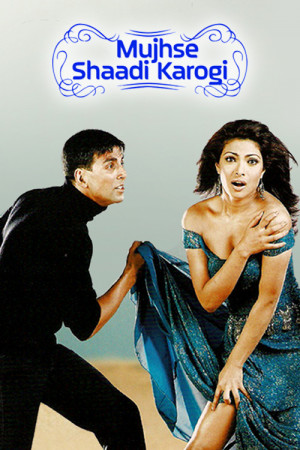
-
Jab We Met
- U
- Comedy
- Romance
A wealthy but suicidal industrialist Aditya Shahid Kapoor boards a train without a ticket to escape his depressing life On the journey he bumps into Geet Kareena Kapoor a Punjabi chatterbox bubbling with energy and optimism She is determined to get him to open up What follows is a series of misadventures centered around a girl who just cant seem to stay out of trouble and a man who feels obliged to look out for her

-
Shabd
- U/A 13+
- Drama
- Thriller
Gladiators and authors have one thing in common They challenge their own power to alter reality And relationships Love is the first casualty in any such battle Shabd is one such amazing story Of great love unyielding passion desperate moments between three people who cannot do without each otherShabd is the story of Shaukat Confident author caring husband waylost wordsmith Shabd is the story of Antara His sensitive vulnerable wife desperate for love And Shabd is the story of Yash A young man impossible not to fall in love with

-
Chal Mere Bhai
- U
- Comedy
- Romance
Vicky Sanjay Dutt takes the responsibility of running the family business after the death of his girlfriend In office he meets a vivacious girl Sapna Karisma Kapoor who after a rocky start manages to wriggle her way into the organisation While they initially only banter Vicky takes a liking to her when she saves his life However Sapna falls in love with Vickys younger brother Prem Salman Khan Prem reciprocates her feelings but when he realises his grieving brother is finally happy he decides to sacrifice his love What will Vicky do when he finds out
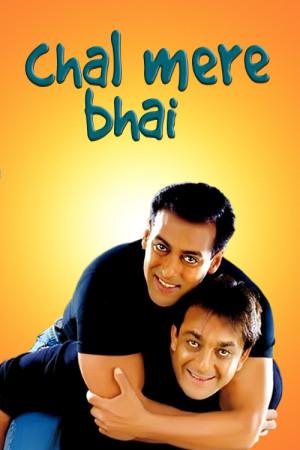
-
Te3N
- U/A 13+
- Mystery
- Drama
Eight years since the death of his granddaughter John Biswas hasnt moved on like the rest of the world Angela was found dead after an unsolved kidnapping John in hope of finding her kidnapper diligently pursues the truth and orchestrates his own investigation after official channels fail Father Martin Das an excop who failed to locate the kidnapper is weighed down by guilt and finds solace in sermons and dogma He occasionally guides John in hopes of repenting for his past A young boy named Rony is abducted from the same place as Angela and her closed case returns to limelight when Sarita Singh deduces that the manner of both the kidnappings is concordant Spurred by the fresh developments John and Martin regain renewed fervour and dig further into the mystery John pieces together all the bits of information available in hopes of finding the true identity of this child kidnapper and if possible some long awaited closure and peace But as John Martin and Sarita find out theres more beneath the surface
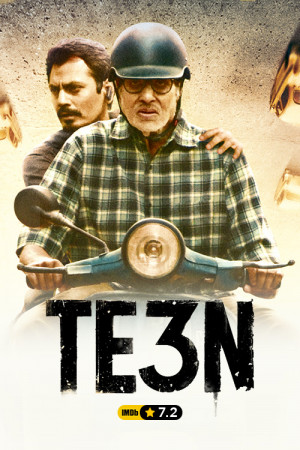
-
UGLY AUR PAGLI
- U/A 13+
- Comedy
- Romance
We have all heard of soft romantic comic love stories Now get set for a love story with a punch a thud and some serious arm twisting thrown in with zero bedside manners Ugly aur PagliIt is the story of Kabir a carefree guy who has been studying engineering for the last 10 years now whose life goes for a sixer when he meets the quirky and kinky Kuhu Kabir always wanted a girl to love but he never in his wildest dreams thought he would encounter a girl who could make him dance around circles run semi naked ride cycles without seats wear high heeled ladies shoes… Oh trust us it gets worse Get set for one of the quirkiest love stories of the year

-
Ishqiya
- U/A 16+
- Comedy
- Romance
Ishqiya is a story of romance between individuals caught in a web of crime suspense passion and deceit Two thieves Khalujan Naseeruddin Shah and Babban Arshad Warsi are on the run from their boss Mushtaq Salman Shahid They seek refuge in the house of an old friend but instead meet his widow Krishna Vidya Balan As they spend time together the thieves get attracted to her Khalujan with his oldfashioned idea of love and Babban with his lustful eyes The threat of imminent death forces them on a path of violence and betrayal Set in a rural landscape Ishqiya explores basic human emotions as influenced by desire greed and revenge

-

-
Piku
- U
- Drama
Piku Deepika Padukone is a Delhi based architect who manages her small businessruns her home and takes care of her 70year old father Bhashkor Banerji Amitabh BachchanA hypochondriac Piku’s Baba must ensure that he has her attention 247 leaving her with little time to do anything else Romance and getting a life of her own just don’t seem possible While both are deeply attached with one another they are equally strong headed stubborn and just won’t let go when dealing with each other’s idiosyncrasies and quirks When Bhashokar emotionally blackmails Piku to take a road trip from Delhi to Kolkata the owner of the local cab company Rana Irrfan Khan has no choice but to drive them personally since none of his drivers are willing to endure Piku or her eccentric father During this undesired road trip they learn to deal with each other’s moods and idiosyncrasies and it reveals more than Bhashokar’s bathroom habits What follows is a heady mix of motion emotion commotion which culminates as Piku and Bhaskhor return to their roots in Kolkata giving us an insight into the father daughter relationship where Bhaskor’s irritating yet endearing demeanor and Piku’s equally headstrong nature may always be at loggerheads but this seemingly crazy relationship is bonded by an understated and an unconditional love that leaves you wanting more

-
Gangs of Wasseypur – 1
- A
- Action
- Crime
From a legacy built on thievery and crime two families repeatedly clash over lucrative territory in this tragic multigenerational saga
- Top
- 10

-
Golmaal Returns
- U
- Comedy
- Adventure
Obsessed with melodramatic television soaps Ekta Santoshi Kareena Kapoor suspects her husband Gopal Ajay Devgn of committing adultery Not satisfied with his explanations she decides to investigate the matter and sets off a chain of hilarious events Her dumb brother Lucky Tusshar Kapoor her sisterinlaw Esha Amrita Arora Esha’s lover ACP Madhav Singh Ghai Arshad Warsi and two individuals named Anthony Gonsalves get tangled up in a confusing madness resulting in the arrest of a hapless Gopal for the homicide of his coworker—a crime he did not commit

-
Khatta Meetha
- U
- Comedy
- Crime
When the Municipal Corporation puts a hold on Sachin Tichkules payment a berk but ambitious municipal contractor he decides to sue them But matters worsen when the new municipal commissioner turns out to be his former girlfriend
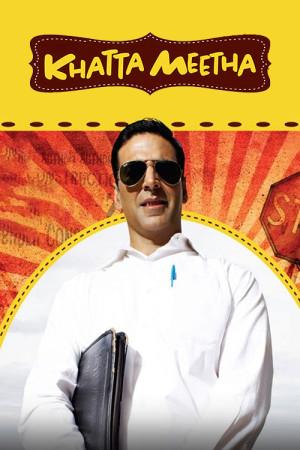
-
FATSO
- U/A 7+
- Comedy
They say that matches are made in heaven This is one of those films where they are undone in heaven But then again that’s the strange thing about love just when the worst has happened the best happens almost like the nightmare never took place almost like love is undeniable almost like love and hope are two faces of the same coinNandini fell in love once and then life happened–shattering every belief that she had about love And then just as she was ready to give up on love she fell in love all over again Hysterical intelligent honest Fatso is all about love packaged in with a calorie count
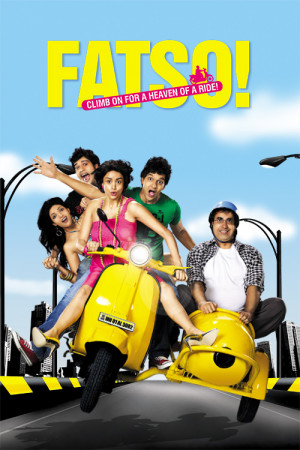
-
